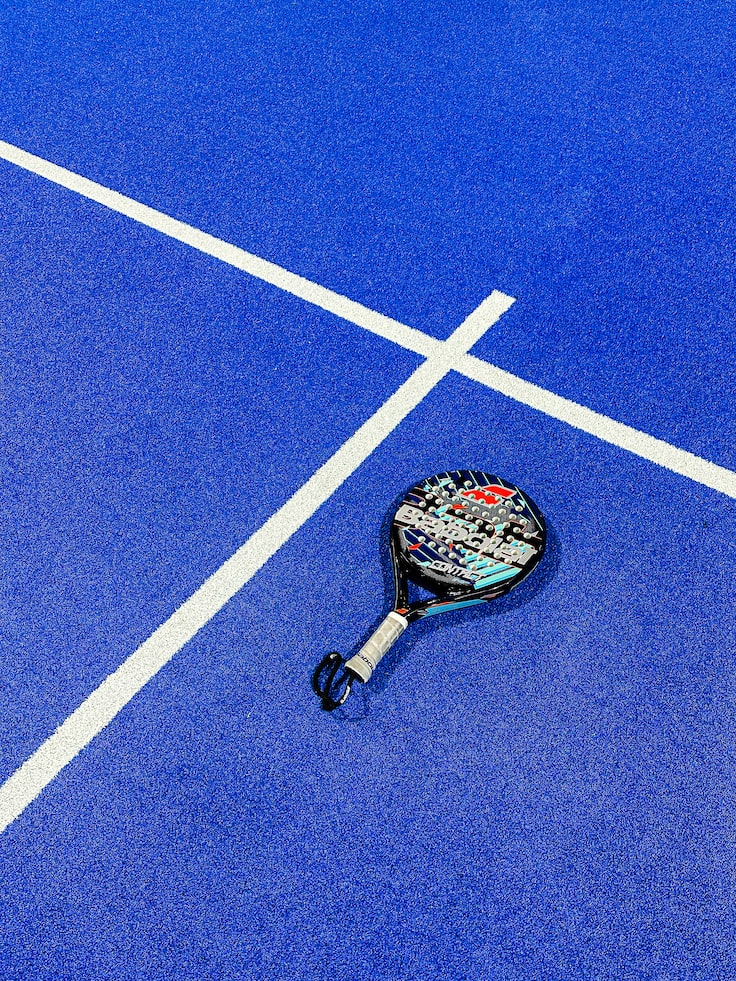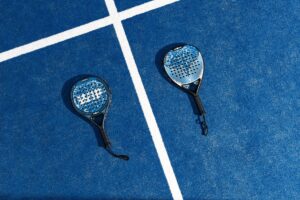Introduction to Padel: A Beginner’s Guide to Playing Singles
3 min read
Introduction to Padel: A Beginner’s Guide to Playing Singles
Are you ready to take your tennis skills to the next level? Look no further than padel! Padel is a fun and exciting racquet sport that combines elements of tennis and squash. It is played in doubles most often, but today, we are going to focus on the art of playing singles in padel for beginners. So, grab your padel racket and let’s dive into the world of padel!
Getting Started
Before we jump into the nuances of playing singles in padel, let’s quickly go over the basics. The court is similar to a tennis court, but with walls surrounding it. The game is played with a solid padel racket and a ball that is, believe it or not, smaller than a tennis ball. The objective is to hit the ball over the net and into the opponent’s court without letting it bounce twice.
Mastering the Serve
The serve is a crucial part of any racquet sport, and padel is no different. In singles, you have the advantage of having the entire court to yourself. So, take a deep breath, find your focus, and get ready to serve. Start by standing behind the baseline and serving diagonally, just like in tennis. Aim to hit the ball with enough height and speed to clear the net and bounce in the opposite court. Consistency is key here.
Remember, how to play singles in padel for beginners is all about strategy, so don’t be afraid to mix up your serves. Try a slice serve that hugs the side wall or a powerful flat serve down the middle. The element of surprise can throw off your opponent and earn you some easy points.
Positioning on the Court
Now that you’ve got your serve down, let’s talk about positioning on the court. In singles, you have a lot more ground to cover, so being strategic is essential. Start by positioning yourself slightly towards the center of the baseline, giving yourself a better chance to reach balls hit to either side.
As the rally progresses, move around the court to maintain the optimal position. If your opponent hits the ball wide, move towards the side wall to give yourself an angle advantage for the return. On the other hand, if your opponent hits the ball down the middle, stay closer to the center of the court to cover more ground quickly. The key is to constantly adjust and adapt to your opponent’s shots.
Mastering the Lob
One of the most effective shots in padel is the lob. Mastering the lob gives you an advantage by disrupting your opponent’s rhythm and forcing them to move farther away from the net. To execute a lob, stand a bit closer to the baseline and swing your padel racket with an upward motion, aiming the ball high over your opponent’s head.
This shot can be a game-changer, especially if your opponent prefers to play near the net. It gives you time to regain your position on the court while putting your opponent on the defensive. Practice this shot to make it a lethal tool in your padel arsenal.
Reading Your Opponent
In padel, as in any sport, it’s important to learn how to read your opponent. Watch their body language, anticipate their shots, and adjust your positioning accordingly. If your opponent consistently favors one side over the other, try hitting the ball to their weaker side to gain an advantage.
Additionally, pay attention to their shot selection. If they tend to play more defensively, try adding some variety to your shots, such as drop shots or volleys near the net, to keep them guessing. On the other hand, if your opponent is more aggressive, focus on keeping the ball low and deep to make it harder for them to attack.
Conclusion
Now that you have a basic understanding of how to play singles in padel for beginners, it’s time to hit the court and put your skills into action. Remember, padel is all about having fun, so don’t be afraid to experiment and try new techniques. With practice and dedication, you’ll soon become a padel pro!






